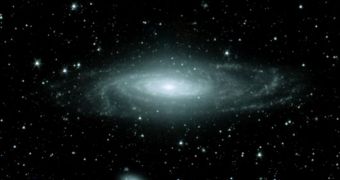Investigators are slowly beginning to reshape their views of how stellar formation occurs, in light of new discoveries being made in nearby galaxies. Recent surveys show that new, blue stars can appear even in so-called galactic “death zones,” where such processes were once thought impossible.
The new data is forcing astronomers to reconsider their positions on how stars form, as well as on the factors that were previously though to act on this process. For starters, astronomers thought that only certain portions of galaxies allowed new stars to form.
Even if they may appear to be uniform, galaxies are clearly divided into sectors, each of which exhibits its own set of conditions that may, or may not, favor the appearance of massive clouds of hydrogen gas and cosmic dust. Even if these clouds do occur, some may never go on to form new stars.
This also explains why some stellar nurseries create stars that then spread through space (as was the case with our Sun), whereas others give birth to compact star clusters, sometimes featuring more than 10,000 members, Daily Galaxy reports.
Astronomers with the American space agency's Galaxy Evolution Explorer (GALEX) survey say that the spots they are founding stellar formation can take place in are amazing. “We’re finding stars in extreme galactic environments where star formation isn't supposed to happen,” says Susan Neff.
She holds an appointment as a GALEX project scientist at the NASA Goddard Space Flight Center (GSFC), in Greenbelt, Maryland. The reason why this particular telescope is used for this survey is that the ultraviolet wavelength range it's sensitive to is precisely that generated by very young stars.
“I was dumbfounded. These stars are truly 'living on the edge',” says investigator Don Neil, who holds an appointment at the California Institute of Technology (Caltech), in Pasadena. He explains that GALEX has the ability to detect stellar formation taking place up to 8 billion light-years away.
“In some GALEX images, we see stars forming outside of galaxiesin places where we thought the gas density would be too low for star birth to occur,” adds the expert, who is also a GALEX team member.
These discoveries “could be telling us something profound about the star-forming process. There could be ways to make stars in extreme environments that we haven’t even thought of yet,” Neff concludes.

 14 DAY TRIAL //
14 DAY TRIAL //